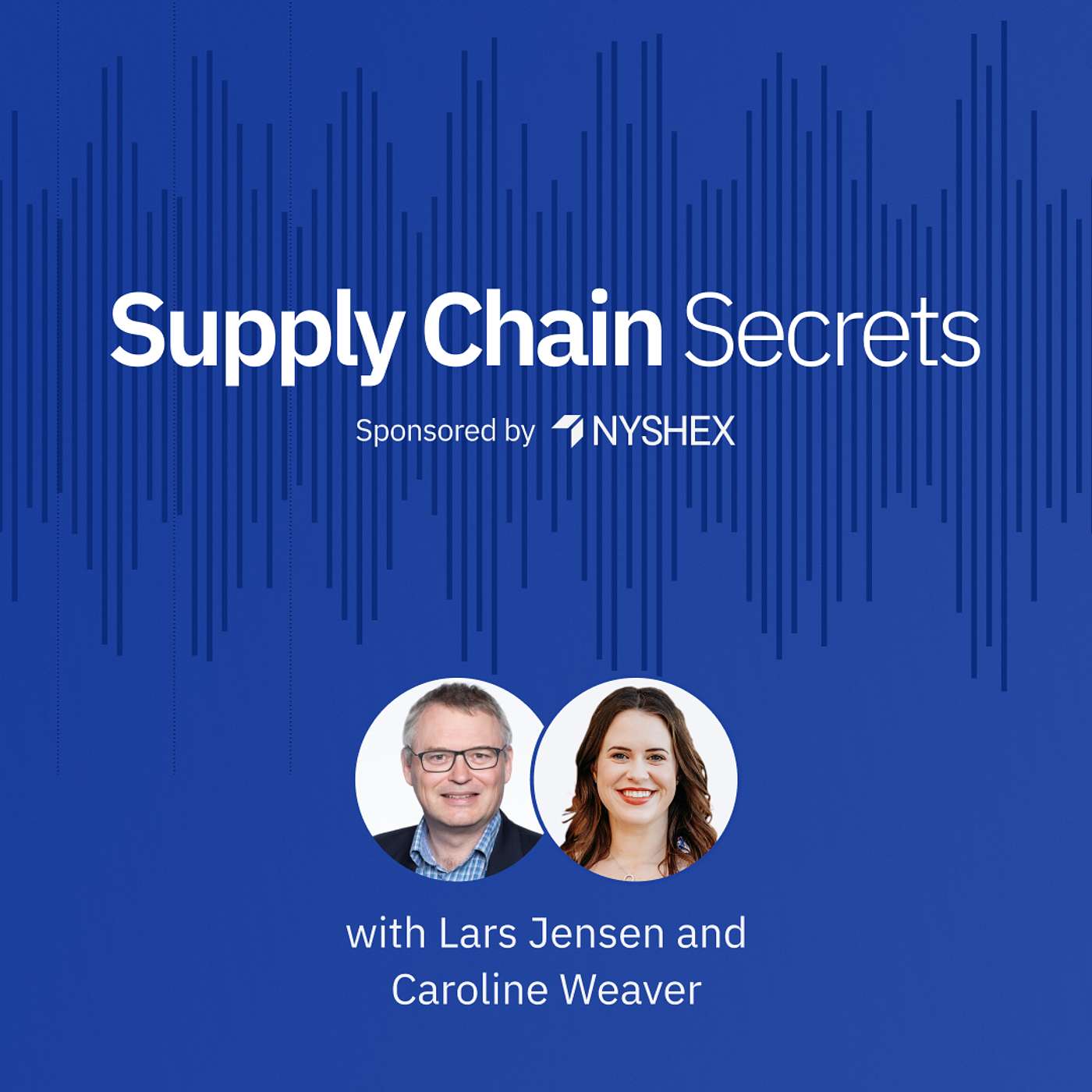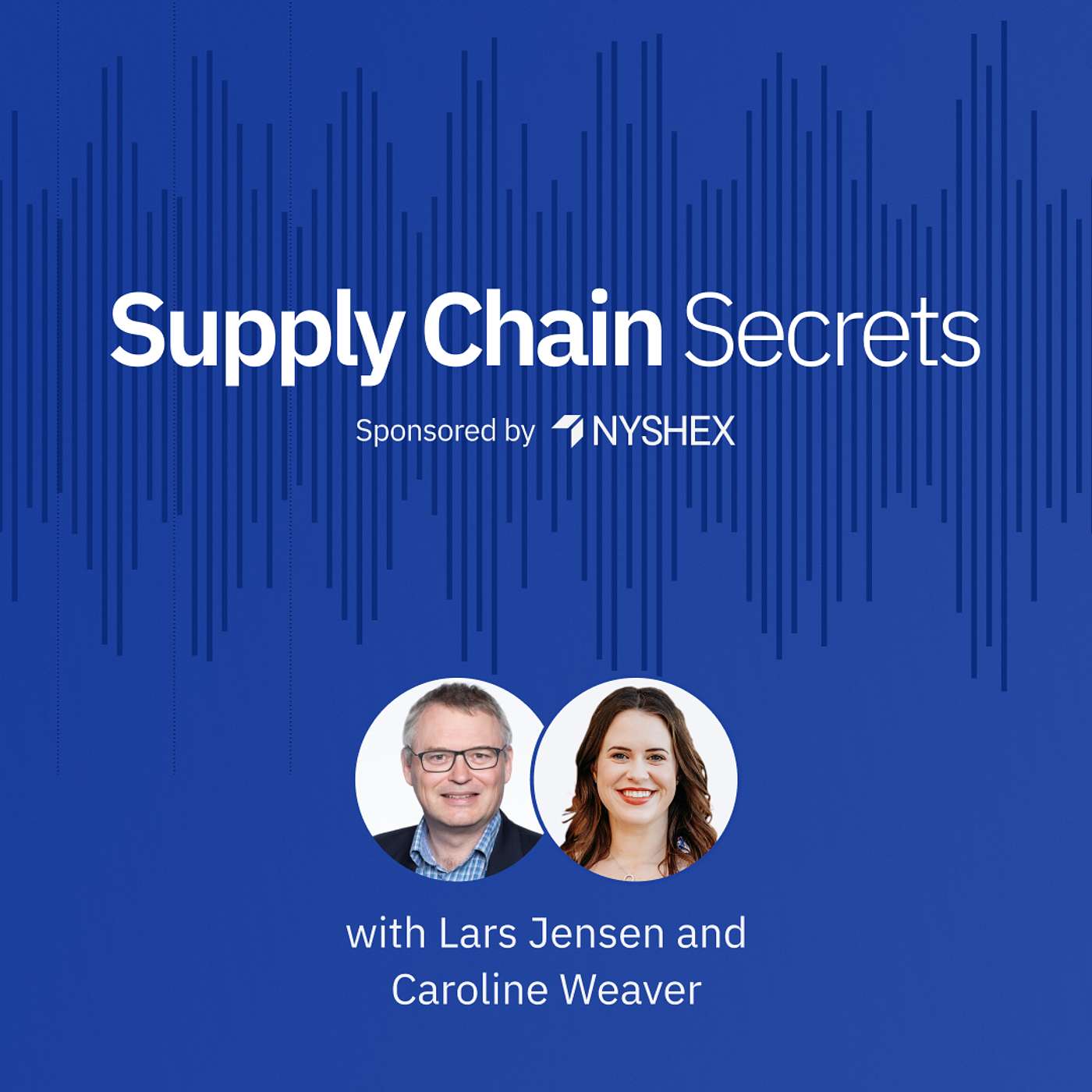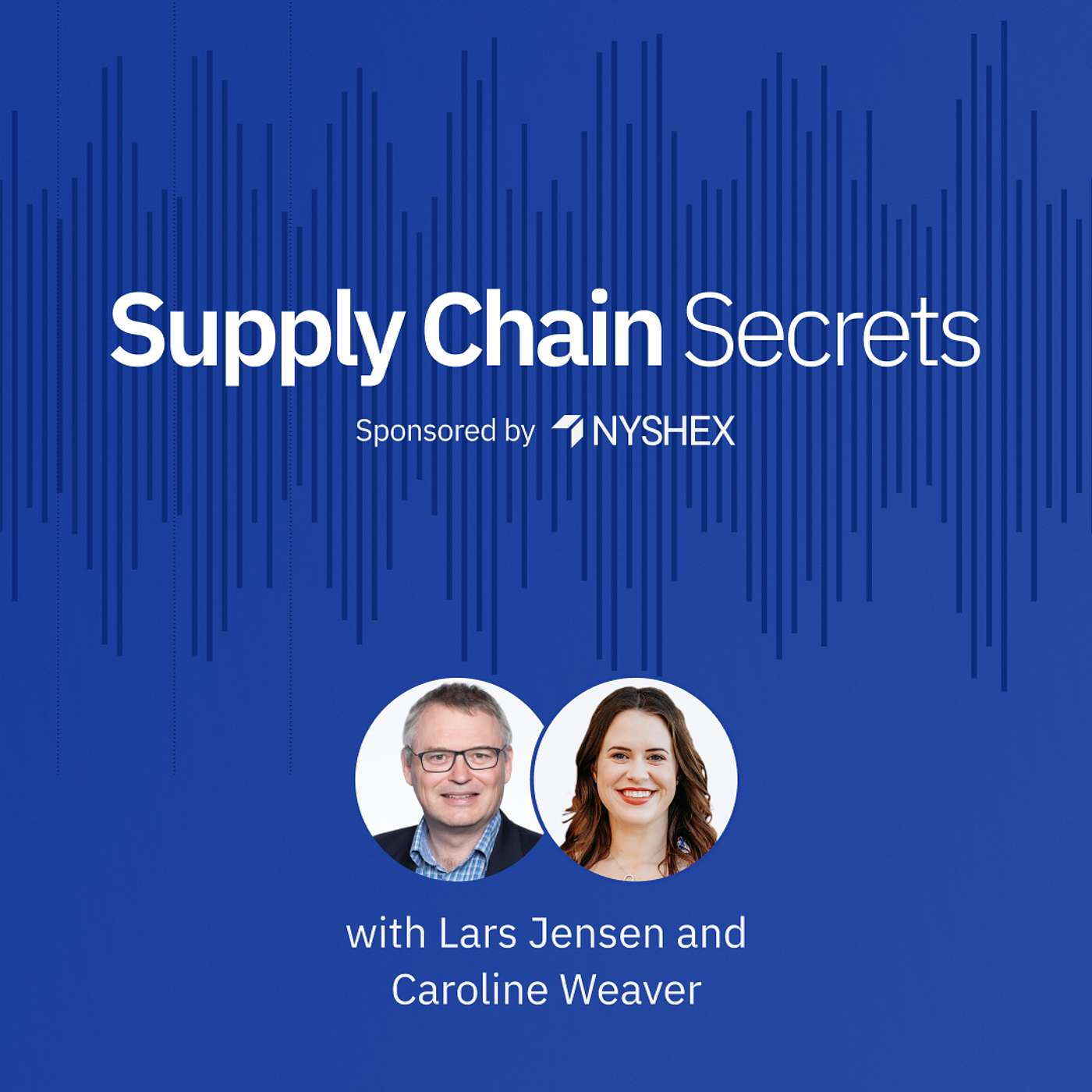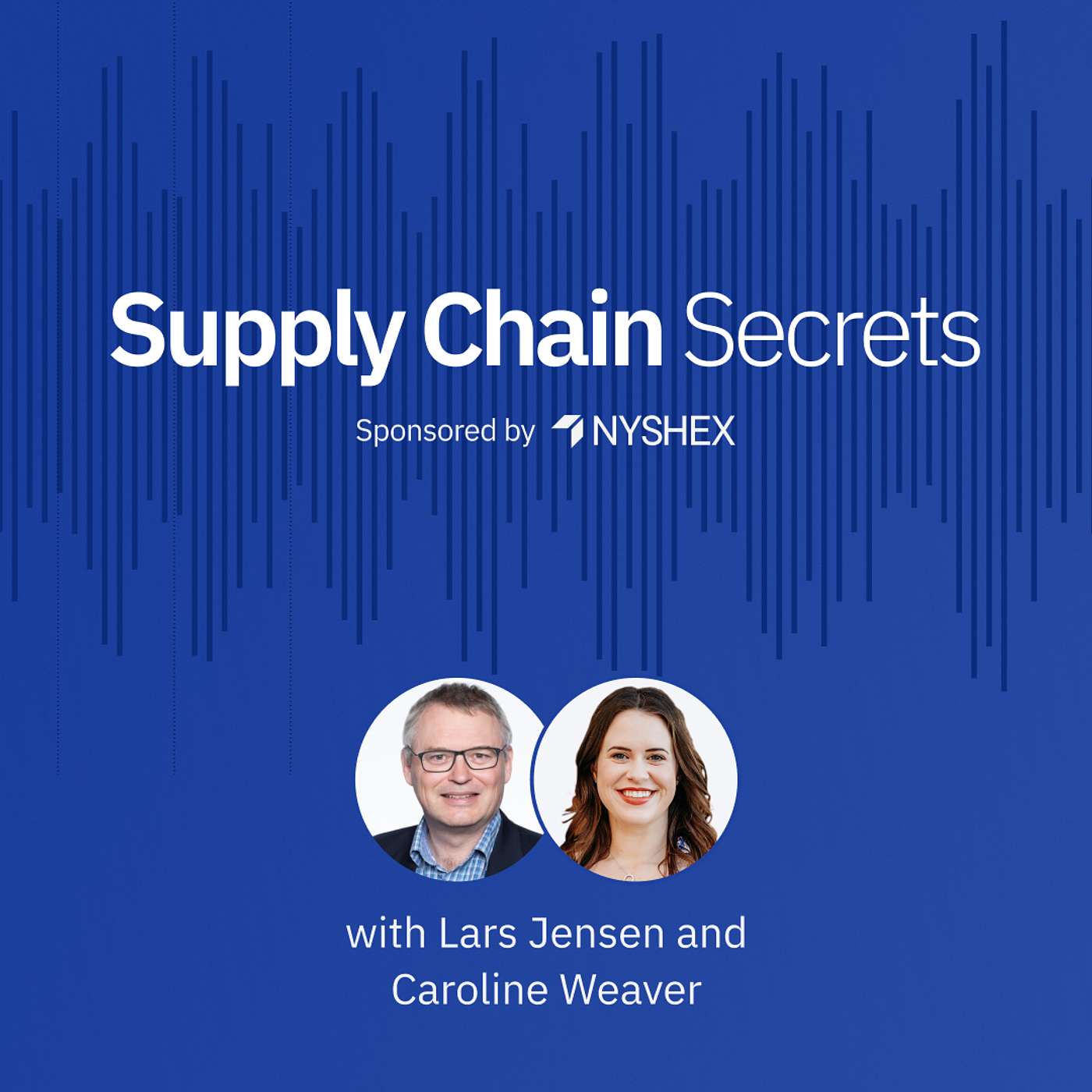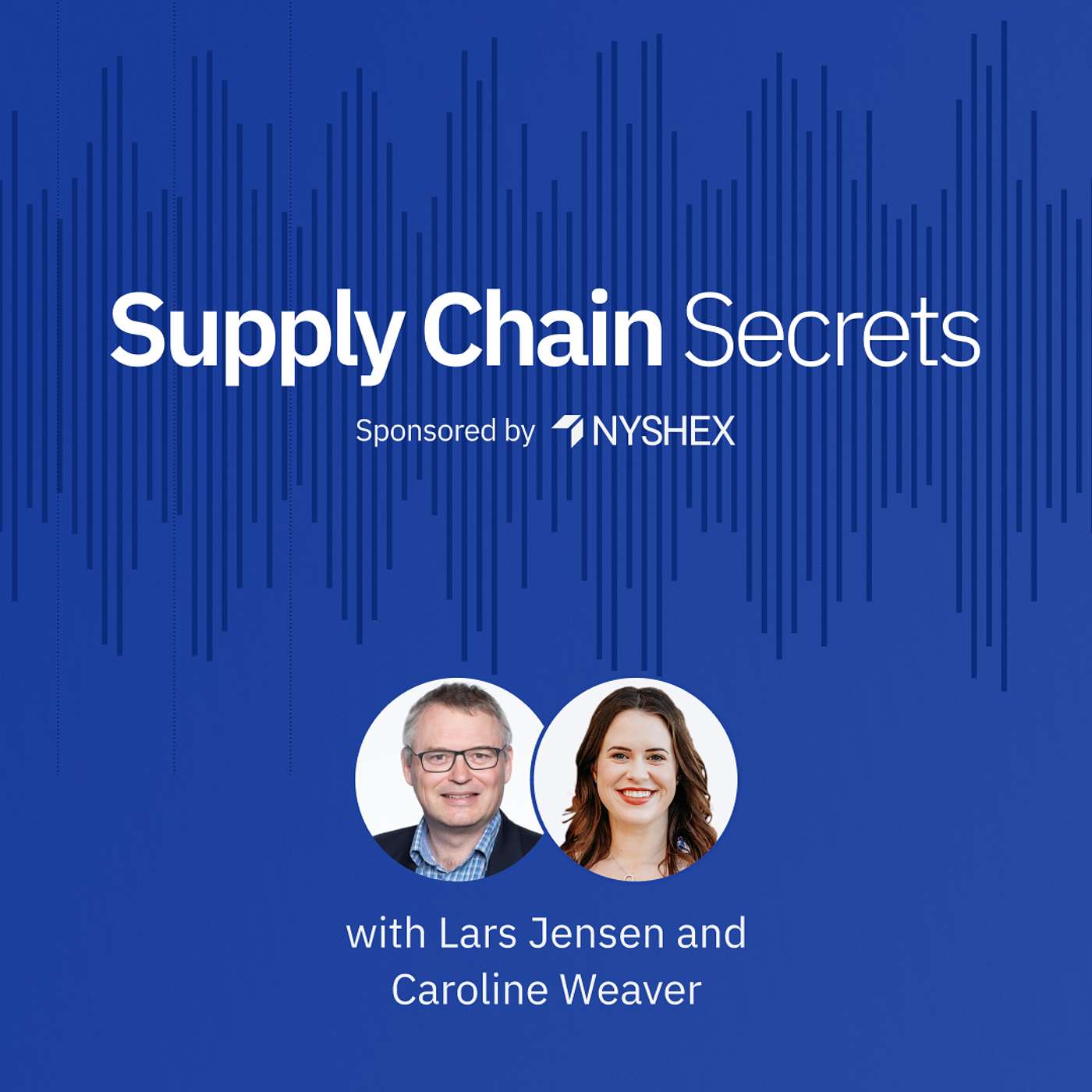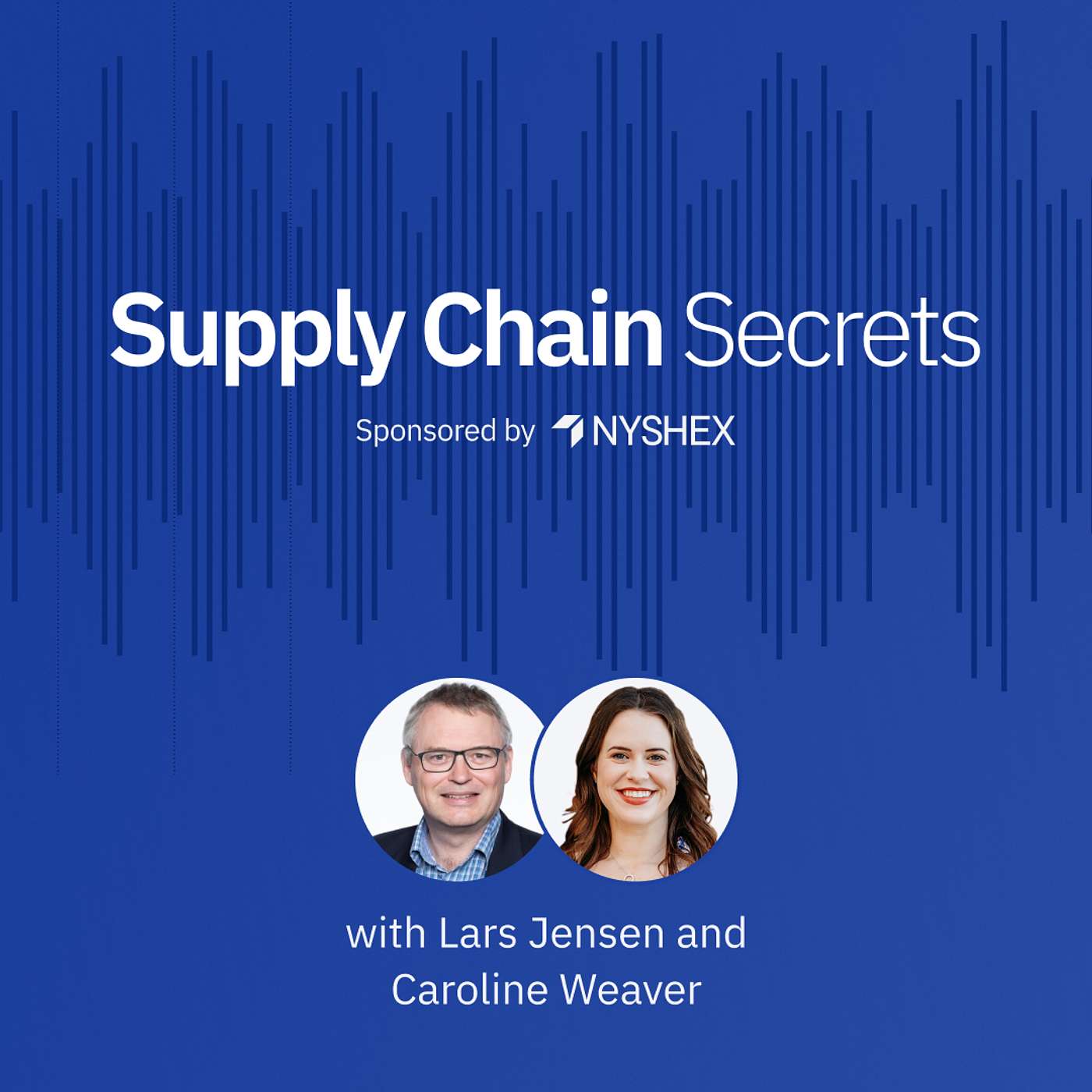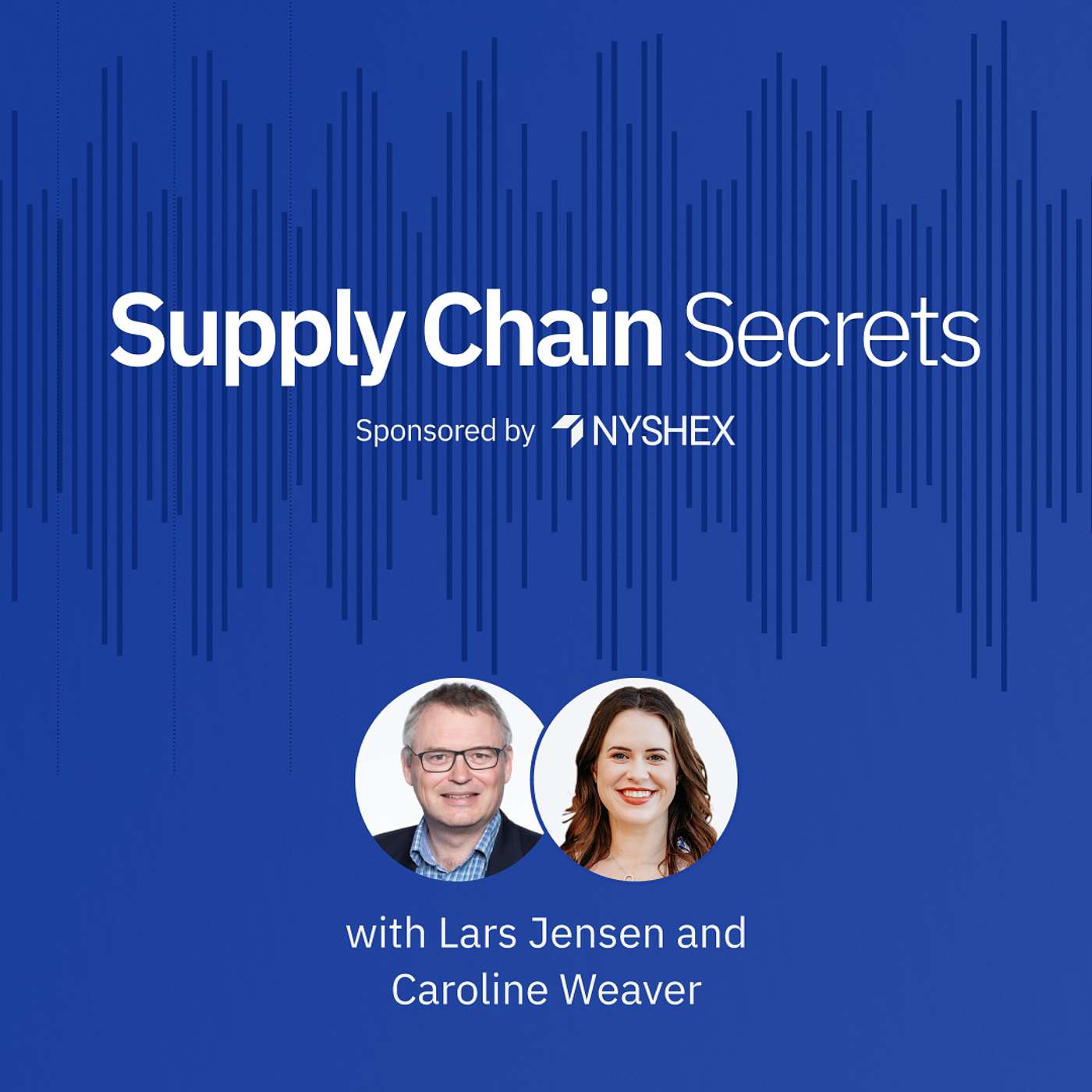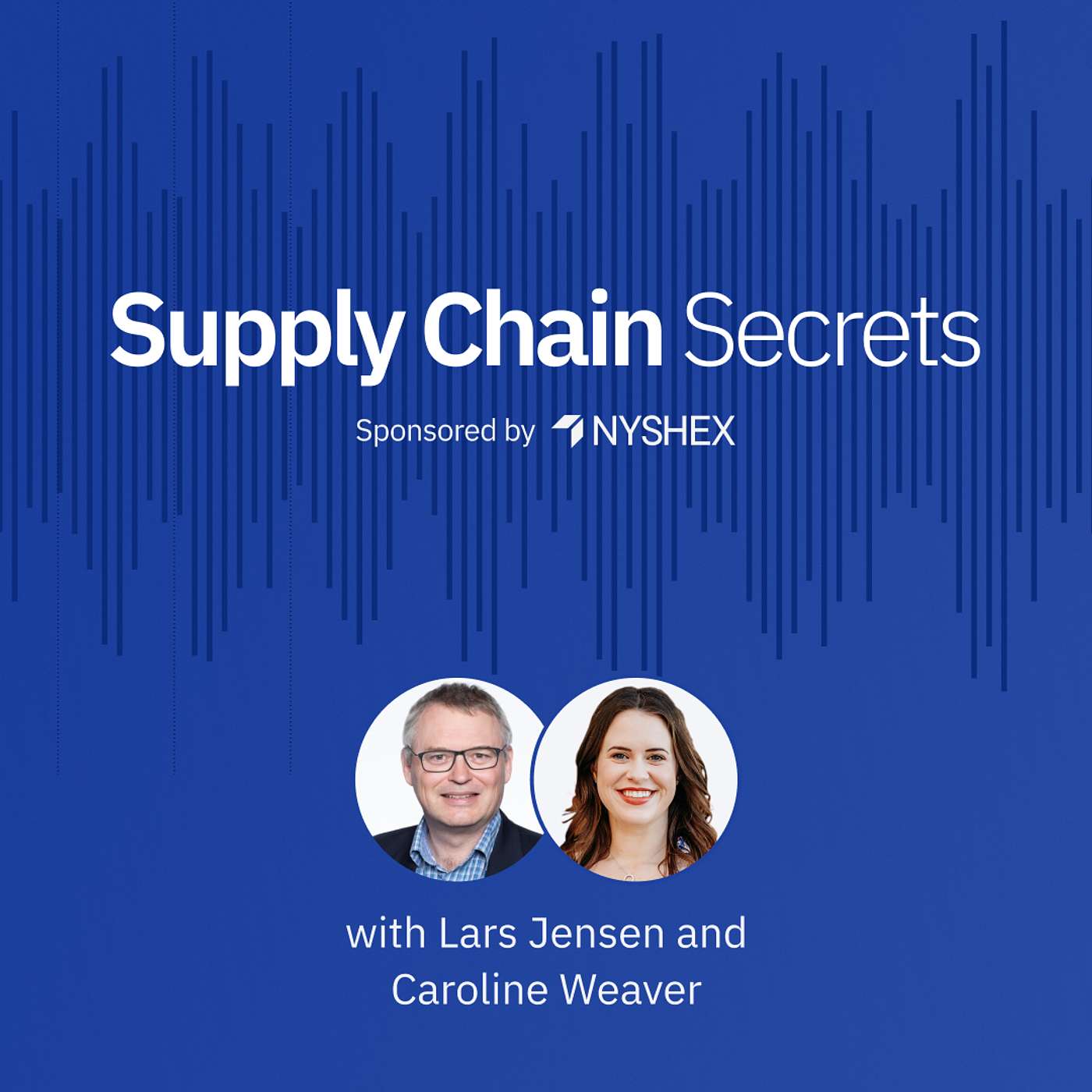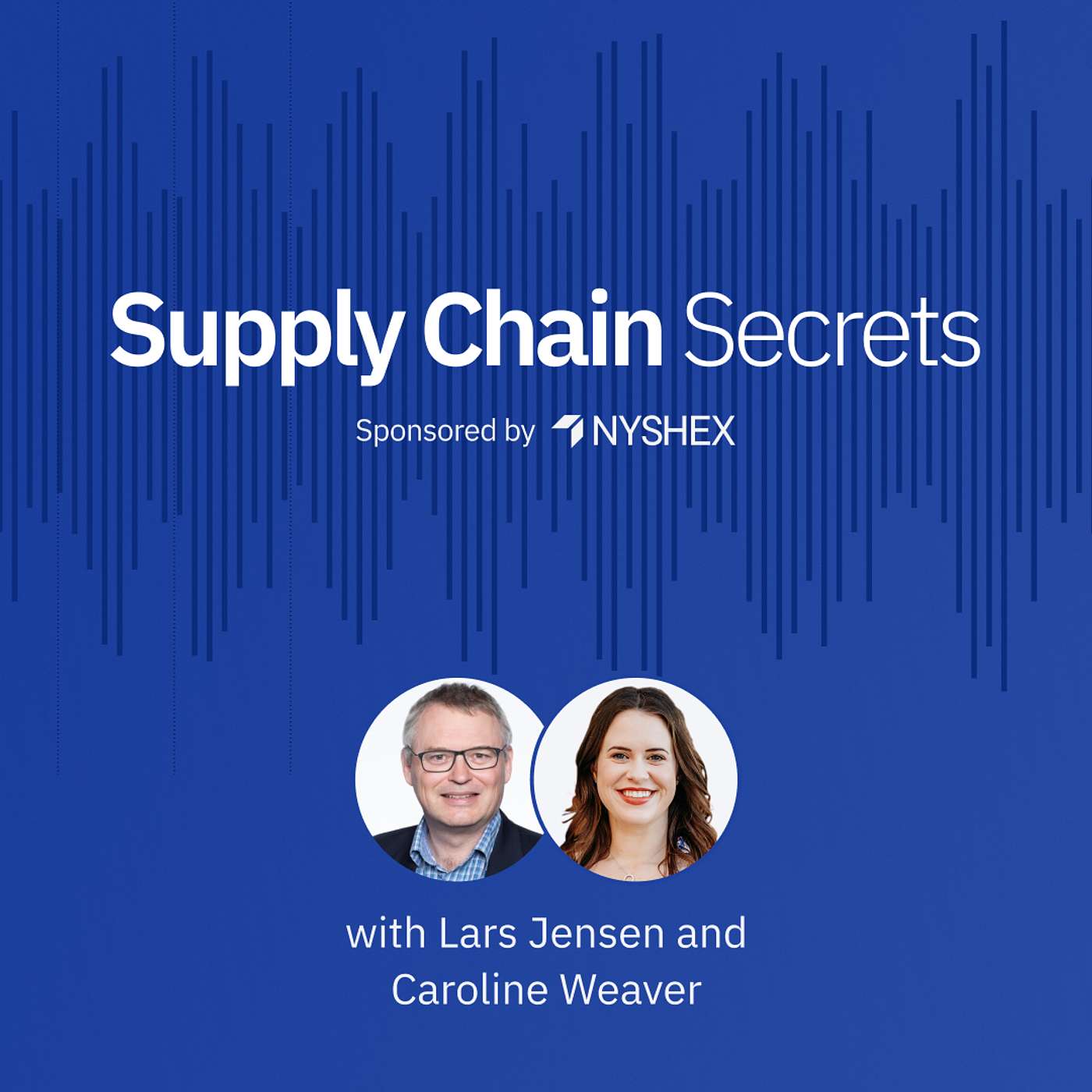Discover Supply Chain Secrets
Supply Chain Secrets

Supply Chain Secrets
Author: NYSHEX
Subscribed: 66Played: 592Subscribe
Share
© 2025 Supply Chain Secrets
Description
The Supply Chain Secrets Podcast cuts through the noise to bring you real, unfiltered insights from the front lines of global logistics. Whether you’re a shipper, NVO, carrier, or just someone who needs to stay ahead of market shifts, we deliver analysis and hard-hitting conversations that actually matter. Visit nyshex.com/podcast to register to attend live!
97 Episodes
Reverse
Global container rates are sliding fast — and volatility is here to stay. In this week’s Supply Chain Secrets, Caroline and Lars break down what’s happening across key trades and what it means for shippers heading into 2026. In this episode: NYFI and SCFI data showing sharp rate declines across Pacific and South American tradesHow new tools and freight rate derivatives can help manage volatilityImport trends suggesting major inventory reductions across U.S. retail sectorsA deep dive into the ...
Rates are up, down, and sideways depending on origin, equipment, and trade lane — but beneath the noise, a clear forward signal is emerging: 2026 contract levels look set to decline. Lars and Caroline walk through the extreme pricing divergence across Asia and why the Trans-Pacific feels like multiple markets stitched together. Here’s what we break down this week: The $25 drop vs. $700 jump in 20-foot rates depending on originWhy the Trans-Pacific is splitting into multiple micro-marketsSouth...
Rates are dropping, pirates are reappearing, and demand is diverging across the globe. In this episode, Lars Jensen and Caroline Weaver unpack what last week’s NYSHEX London event revealed about market volatility — and why the container industry’s “old normal” isn’t coming back. They cover: Sir Richard Dearlove’s surprising optimism on the Red Sea crisisWhy NYFI data shows loaded spot rates collapsing againThe widening gap between 20’ and 40’ ratesWhat’s behind North America’s lagging demandA...
Container shipping just won’t sit still. This week, Caroline Weaver and Lars Jensen unpack the latest volatility across global trades — from Pacific spot rates showing strange regional “vibrations,” to a 20–30% capacity surge on the transatlantic that’s pushing rates to decade lows. They also break down the temporary pause in the U.S.–China trade war — what it really means for importers heading into 2026 — and why a new uptick in Somali piracy adds one more layer of complexity to an already u...
Freight rates might look like they’re holding steady — but when you adjust for inflation, the real story tells a very different tale. In this week’s Supply Chain Secrets, Caroline Weaver and Lars Jensen break down why inflation-adjusted freight rates on major trade lanes have quietly slipped below pre-pandemic levels, even as indices like the SCFI show nominal increases. They also discuss how politically charged tariffs are blurring the line between trade policy and politics, and why a single...
What happens when AWS failures disable your Stop Recording button? You let Lars Jensen keep talking — and you get one of the most in-depth updates yet. In this week’s Supply Chain Secrets, Caroline Weaver and Lars unpack: Why IMO’s “Net Zero” framework just became a zombie proposal,How that decision could stall billions in green-fuel investment,Why spot-rate spikes may be more sentiment than substance, andThe latest on the Red Sea ceasefire and tariff tension between the U.S. and China....
Tariff whiplash, “China’s USTR,” and a carbon levy vote—yet spot rates look oddly calm. Caroline Weaver and Lars Jensen cut through the chaos: Trump’s 100% tariff warning vs. the Nov 10 tariff snap-back, China’s mirror policy (including the 25% ownership twist), and last-minute U.S. duties on ship-to-shore cranes (with 150% proposed on terminal gear). We also unpack why Trans-Pac spot rates paid are at ~12-month lows despite $3k GRI filings, and what CTS load-date demand says about wher...
In this week’s Supply Chain Secrets podcast, hosts Caroline Weaver and Lars Jensen unpack the latest developments shaping container shipping and global trade. Lars calls in from Curaçao with an update on freight rates across the Pacific and how carriers’ blank sailings are reshaping capacity as Golden Week slows volumes. He dives into the USTR’s new restrictions on Chinese-owned vessels — and how China’s maritime legislation hints at potential retaliation against U.S. shipping interests. The ...
The latest Supply Chain Secrets dives into the widening gap between quoted rates and what’s actually paid. Lars Jensen explains how the NYFI reveals a “phantom peak” that never materialized on the Trans-Pacific, the sharp declines on Asia–South America, and why Golden Week isn’t offering carriers relief. We also break down Trump’s tariff announcements, what the upcoming USTR fees mean for carriers (and how Seaspan and Hede Shipping are reacting), and look ahead at the vessel order book and wh...
In this episode of Supply Chain Secrets, Caroline Weaver and Lars Jensen break down the latest volatility in container shipping. Asia–Europe rates continue their seasonal slide, while the Pacific faces a dramatic collapse in demand just as carriers push blank sailings. Lars explains why the gap between quoted and paid spot rates matters, why blank sailings may slow—but not stop—rate erosion, and how Golden Week timing is shaping strategy. The conversation also covers the looming U...
In this week’s episode of Supply Chain Secrets, Caroline Weaver and Lars Jensen break down the latest shifts across major trades. Asia–Europe: Spot rates dip below spring levels, but Lars explains why it’s not yet a full collapse.Trans-Pacific: A striking bifurcation—rates out of Southeast Asia/China erode while Northeast Asia (Korea, Japan) surges by $500/FEU.Atlantic: After months of stability, head-haul rates slide from $1,800 to $1,500 per FEU.Capacity Updates: Carriers move beyond blank ...
In this episode of Supply Chain Secrets, Caroline Weaver and Lars Jensen unpack the latest twists in global trade. They cover falling Asia–Europe spot rates, unexpected tariff exemptions affecting hundreds of commodities, and the stark divide between booming global container demand and declining U.S. volumes. Lars also sheds light on rumors around HMM’s ownership shift and the sudden tightening of U.S. visa rules for seafarers—changes that could complicate crew logistics for ocean carri...
On this week’s Supply Chain Secrets, Caroline and Lars dive into the latest on global shipping markets. From sliding Asia–Europe spot rates and a short-lived Pacific GRI, to an unexpected Atlantic downturn, Lars explains what the numbers actually mean for shippers. The discussion expands to Red Sea security risks, the balance between freedom of navigation and seafarer safety, and what a surprising China–India–Russia meeting signals about a rapidly multipolar world. Packed with insights ...
What’s harder than catching Lars Jensen on stable Wi-Fi? Predicting what’s next in global supply chains. Fresh off summiting Mount Kilimanjaro, Lars’ next stop was Comoros — and let’s just say the Wi-Fi didn’t make the climb. But a spotty signal can’t stop Supply Chain Secrets. This week’s update is packed with hard-hitting market realities for shippers, forwarders, and carriers alike: Trans-Pacific spot rates slipping into unsustainable territoryTariff risks that could shake demand just befo...
While Lars laces up his boots to climb Mount Kilimanjaro, he and Caroline dive into the latest global shipping news. They cover sliding Asia–Europe and Pacific spot rates, uncertainty around reciprocal and Section 232 tariffs, and the U.S. pushback on IMO’s decarbonization measures. They also analyze H1 financials from major carriers, with Hapag-Lloyd’s standout 12% volume growth raising big questions. Tune in for timely insights delivered from the slopes of Tanzania.
In this episode, Caroline Weaver and Lars Jensen break down the latest shifts in ocean freight rates, revealing why long-term contracts offer far less insulation from spot market volatility than many shippers think. They compare NYFI and CTS data to show the hidden correlation between contract and spot pricing, then dive into a volatile week in trade policy—from unpredictable “reciprocal” tariffs to a surprise penalty on Indian imports that could hit cargo loaded before the rules even e...
In this episode, Lars and Caroline break down the unexpected lull in Trans-Pacific rates, the true state of peak season in Asia–Europe, and the looming tariff deadlines that could disrupt global trade. They discuss how forward-looking indicators like the NYFI expose weak market fundamentals despite high quotes, and they unpack the IMF’s latest trade outlook revisions. The episode closes with key insights on OFAC sanctions impacting container shipping and what they signal for shippers wo...
This week on Supply Chain Secrets, Lars Jensen and Caroline Weaver dive deep into the tariff chaos rattling US importers, a collapse in 20-foot container rates with big implications for US exporters, and why equipment shortages could blindside your bookings. Plus, we unpack reliability stats, looming Q4 deadlines, and the twist in the Hutchison Ports deal that’s reigniting geopolitical tension in Panama.
Is peak season already over? In this no-holds-barred episode of Supply Chain Secrets, guest host Don Davis and industry veteran Lars Jensen deliver a firehose of insight. They expose the vanished Trans-Pacific peak, decode the chaos behind West vs. East Coast rate disparities, and unpack what looming tariffs and overcapacity mean for your freight strategy. Lars dives deep into real NYFI spot rate data, global emissions trends, and the shipping industry's dirty secret: a structural overcapacit...
This week on Supply Chain Secrets, Caroline Weaver and Lars Jensen break down the rollercoaster of recent Trans-Pacific rates—why they surged, why they collapsed just as quickly, and how tariffs are reshaping peak season entirely. They explore how geopolitical uncertainty and shifting trade policy are leaving both carriers and shippers scrambling. Plus, Lars explains why August 1 could be a breaking point for U.S. importers trying to plan amid chaos.


